Black holes are giant warps in space and time whose pitch-black nature keeps them mysterious. Yet scientists continue to push their understanding of the objects in deep space.
Over the past year, astronomers have gleaned new insights into black holes across the universe. Here is a list of 15 times black holes surprised us in 2022.
1. Sagittarius A*: 1st photo of Milky Way’s black hole
In 2022, scientists captured the first photo of Sagittarius A*, the gargantuan black hole at the heart of the Milky Way. The Event Horizon Telescope captured the image in the light of submillimeter radio waves emitted by hot gas swirling around the edge of the black hole.
“Until now, we didn’t have the direct picture to prove that this gentle giant in the center of our galaxy is a black hole,” Feryal Özel, an astrophysicist at the University of Arizona, said during a National Science Foundation news conference in May. “It shows a bright ring surrounding the darkness, and the telltale sign of the shadow of the black hole.”
Read the full story: This is the first photo of the Milky Way’s monster black hole Sagittarius A*
The telescope first made headlines in 2019 when it successfully produced the first-ever image of the event horizon of a black hole, specifically the one at the core of the active elliptical galaxy Messier 87.
Capturing a photo of Sagittarius A* proved more difficult because the gas and dust in the 27,000 light-years between Earth and Sagittarius A* can scatter the submillimeter waves and blur the image. In addition, whereas M87’s black hole appears bright because it is devouring a lot of gas, the flow of material onto Sagittarius A* is far more feeble, making it much fainter.
2. Black hole rips star to shreds in tidal disruption event
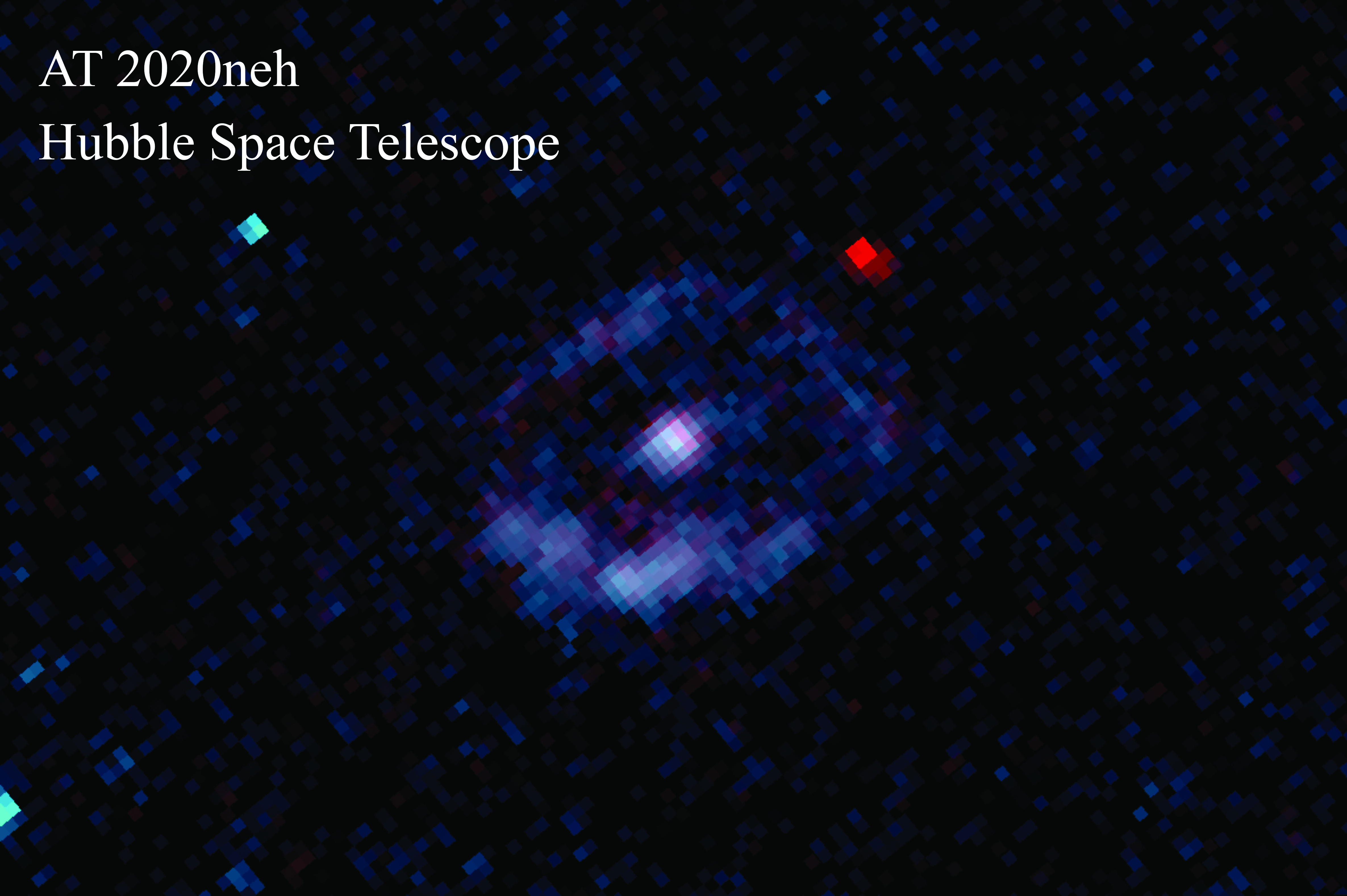
A once-unknown black hole revealed its existence to astronomers when it shredded apart and gobbled up a star that drifted too close to it. The violent disruption came from an intermediate-mass black hole between around 100,000 and 1 million times the mass of the sun located in dwarf galaxy SDSS J152120.07+140410.5 about 850 million light-years from Earth.
The cataclysm is an occurrence called a tidal disruption event (TDE). The TDE, designated AT 2020neh, became visible when it blasted out a flare of radiation so powerful that it briefly outshone every star in its galaxy combined.
Read the full story: Black hole announces itself to astronomers by violently ripping apart a star
Astronomers have previously used TDEs to measure the mass of supermassive black holes millions to billions of solar masses in size. However, AT 2020neh is the first time TDEs have helped analyze the masses of smaller midsized intermediate-mass black holes.
3. Closest black hole to Earth
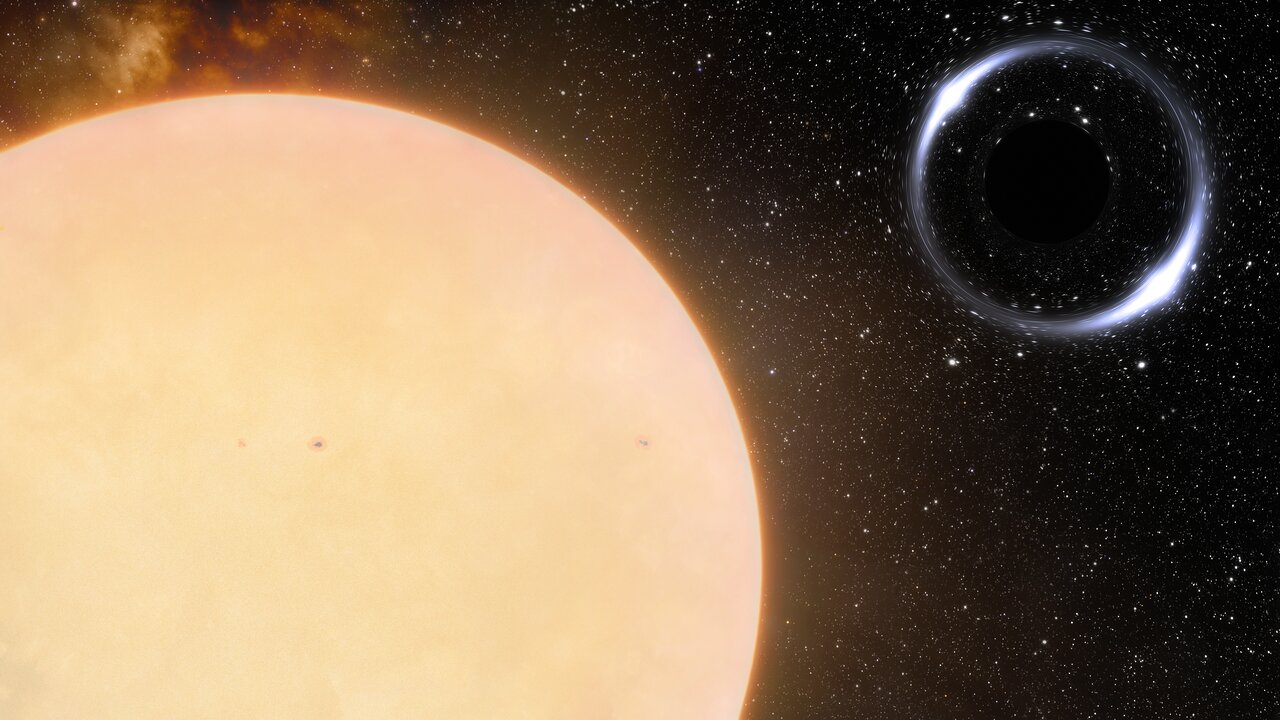
In November, scientists announced a newfound black hole that now holds the record as the closest known one to Earth. Gaia BH1, which is about 10 times more massive than our sun, lurks just 1,560 light-years from our planet, about twice as close as the previous record-holder.
Gaia BH1 resides in a binary system whose other member is a sunlike star. That star is about as far from its companion black hole as Earth is from the sun, which makes Gaia BH1 very special.
Read the full story: Newfound black hole is closest known to Earth
4. Fastest-growing black hole eats 1 Earth per second
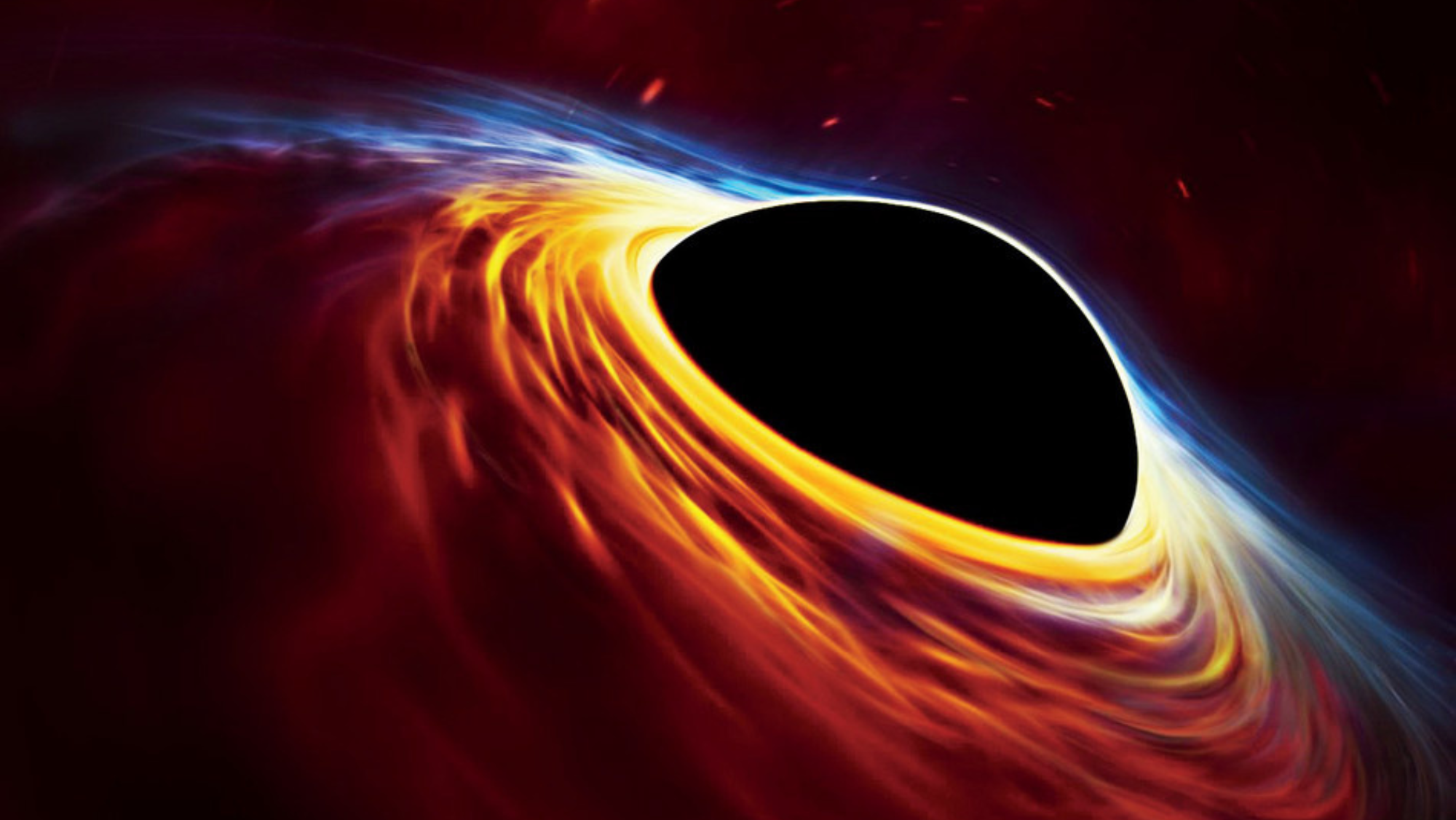
Astronomers have detected the fastest-growing black hole ever seen, devouring the equivalent of one Earth per second. It appears to be the most rapidly growing black hole in the past 9 billion years.
The behemoth currently has a mass 3 billion times that of the sun, making it 500 times bigger than Sagittarius A*, the supermassive black hole at the heart of the Milky Way. It can fit the entire solar system behind its event horizon, the boundary beyond which nothing can escape.
Read the full story: Fastest-growing black hole ever seen is devouring the equivalent of 1 Earth per second
The rush of matter onto the surface of the black hole has resulted in a quasar — an extraordinarily bright heart of a galaxy—blasting out enough energy to make it 7,000 times brighter than the light from every star in the Milky Way. All in all, this quasar (designated SMSS J114447.77- 430859.3) is the most luminous one known for about the past two-thirds of the universe’s 13.8 billion-year existence.
“Now, we want to know why this one is different — did something catastrophic happen?” lead researcher Christopher Onken, a researcher at the Research School of Astronomy and Astrophysics at the Australian National University (ANU), said in a statement. “Perhaps two big galaxies crashed into each other, funneling a whole lot of material onto the black hole to feed it.”
5. Rogue black hole spotted on its own
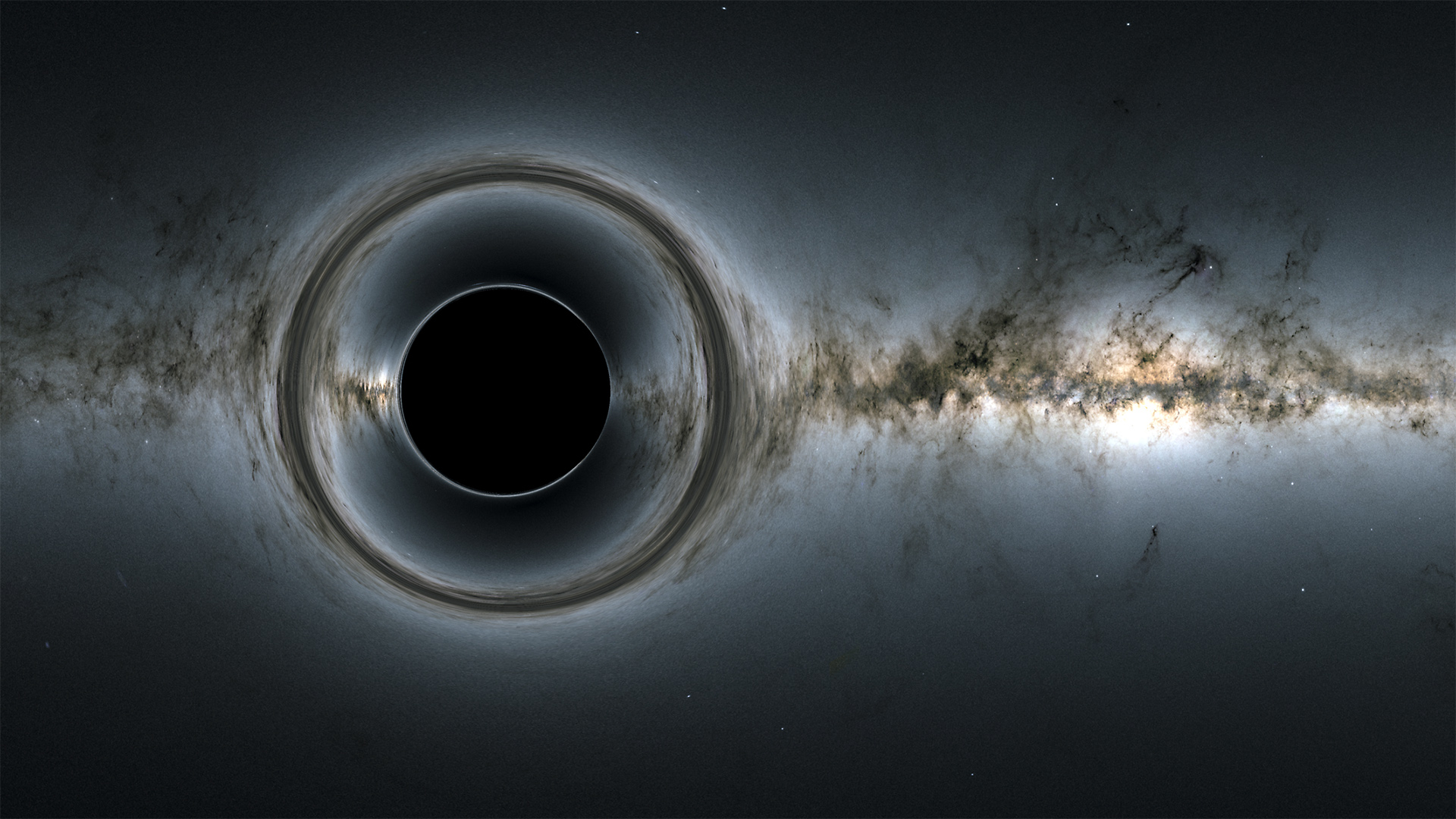
In February, astronomers detected an isolated black hole about the mass of a star. With the help of NASA’s Hubble Space Telescope, scientists discovered the object about 5,150 light-years away from Earth, in the direction of the bulge in the center of the Milky Way.
Stars big enough to create black holes—ones more than 20 times the mass of the sun—are estimated to make up about one out of a thousand stars, suggesting that in the Milky Way, “there should be about 100 million stellar-mass black holes,” study lead author Kailash Sahu, an astrophysicist at the Space Telescope Science Institute in Baltimore, told Space.com.
Read the full story: Rogue black hole spotted on its own for the first time
Previously, all stellar-mass black holes detected to date existed in binary systems with companions such as neutron stars. However, Sahu noted most of the Milky Way’s stellar-mass black holes should be singletons.
The researchers estimated the newfound isolated black hole was about 7.1 times the mass of the sun and traveling at a speed of about 100,000 mph (162,000 kph). This suggested this black hole may have been propelled by the supernova explosion that gave birth to it.
6. Super-distant black hole blasts leftovers at Earth
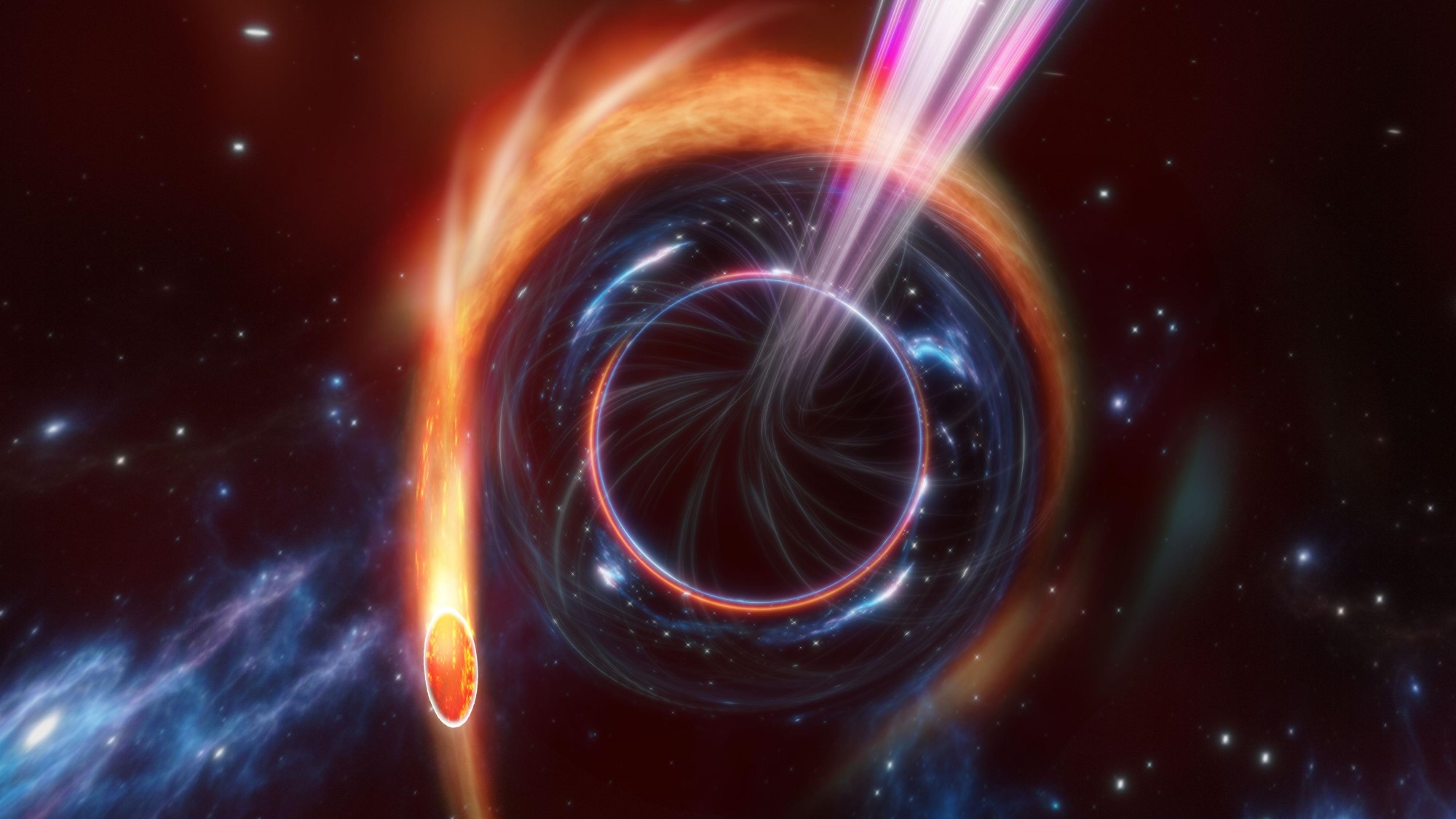
In November, astronomers found the most remote known example yet of a black hole tearing a star apart, all because of a jet of stellar “leftovers” it blasted directly at Earth.
This event, dubbed AT2022cmc, occurred about 8.5 billion light-years away, with its light beginning its journey when the 13.8 billion-year-old universe was just one-third of its current age. The researchers estimated the black hole was eating about half the sun’s worth of mass each year.
Read the full story: Super-distant black hole is eating half a sun a year and blasting its leftovers at Earth
In about 1% of these instances of violent destruction, known as a tidal disruption events (TDEs), the black hole blasts out jets of plasma and radiation from its poles.
“We have only seen a handful of these jetted-TDEs and they remain very exotic and poorly understood events,” Nial Tanvir, an astronomer at the University of Leicester in the U.K. and co-author on the new research, said in a statement from the European Southern Observatory (ESO), which operates some of the telescopes used in the research. “Astronomers are thus constantly hunting for these extreme events to understand how the jets are actually created and why such a small fraction of TDEs produce them.”
7. Black hole is ‘burping out’ a ‘spaghettified’ star
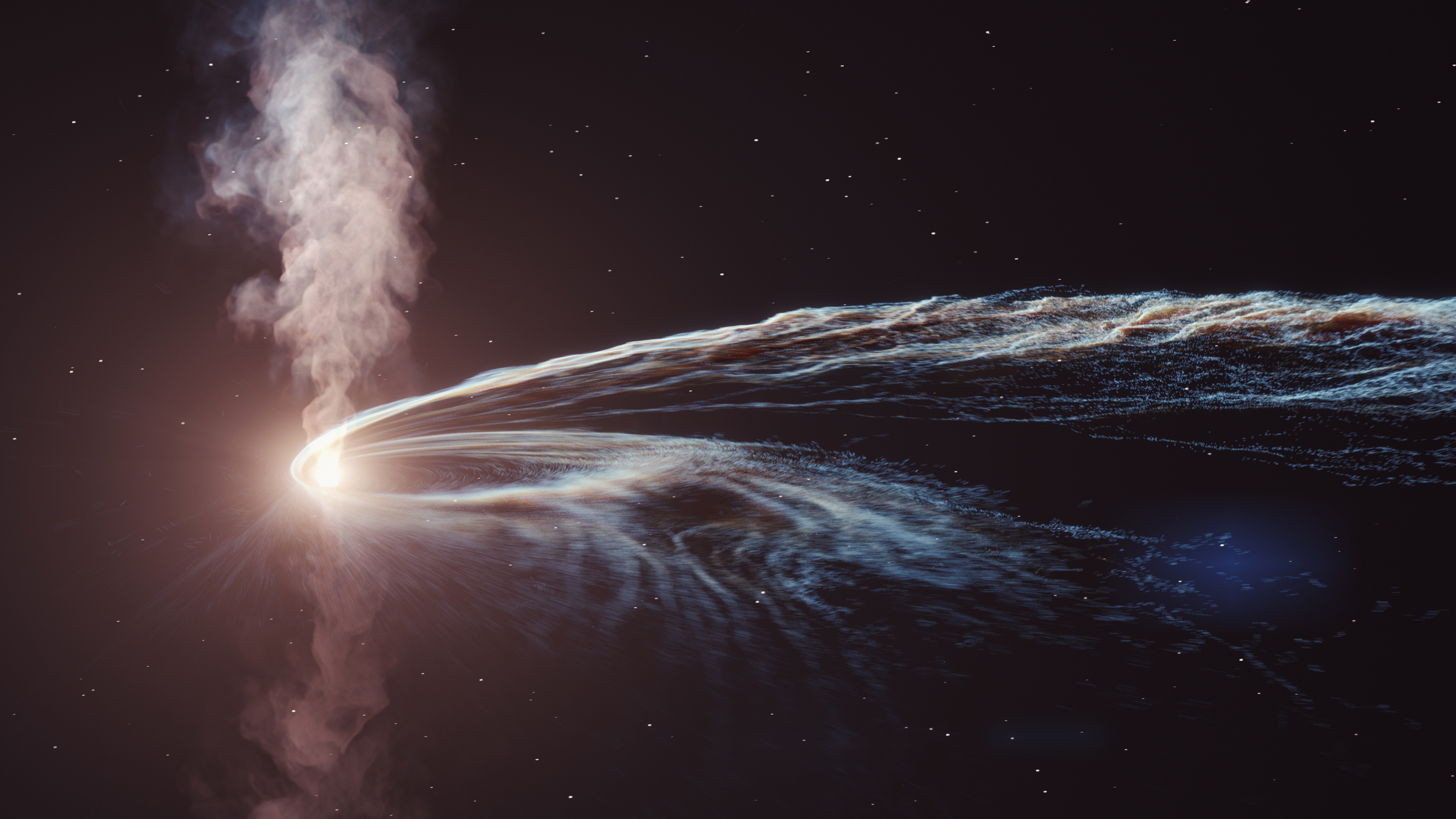
In 2022, three years after a black hole made a spaghetti dinner from a star and gorged itself, the behemoth was spotted again, now burping out the remains.
When objects such as stars get too close to a black hole, its powerful gravitational field can stretch them in one direction while squashing them in the other direction, thus “spaghettifying” them. As this spaghettified matter falls onto the black hole, it heats up, producing a flash of light that astronomers can spot from millions of light-years away. However, black holes are messy eaters, and occasionally spit some of this material back out into space.
Read the full story: Black hole is ‘burping out’ a ‘spaghettified’ star it devoured years ago
In October 2018, astronomers detected a black hole located in a galaxy 665 million light-years from Earth tearing up a star about one-tenth the mass of the sun. Three years later, the black hole was detected spewing the material from its last meal.
“This caught us completely by surprise — no one has ever seen anything like this before,” Yvette Cendes, an astronomer at the Harvard & Smithsonian Center for Astrophysics who led the research, said in a statement. “It’s as if this black hole has started abruptly burping out a bunch of material from the star it ate years ago.”
8. Synthetic black hole proves Stephen Hawking right
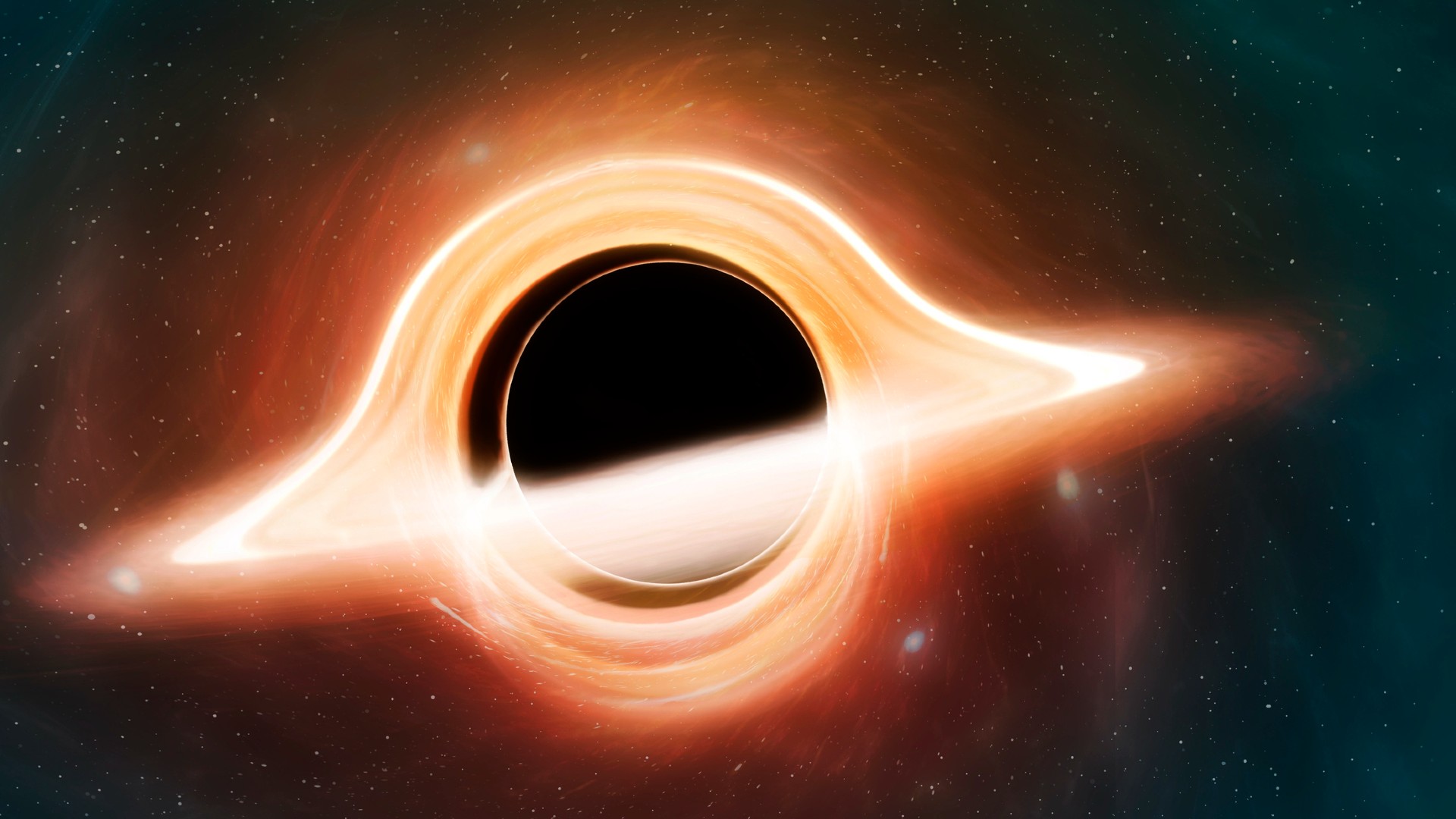
In November, scientists announced that lab simulation of a black hole suggests that one of Stephen Hawking’s most famous ideas may be right.
Quantum physics has found there is no such thing as an empty vacuum. Instead, space is essentially teeming with vibrations that, if charged with enough energy, can burst into pairs of particles and their antiparticles that almost immediately annihilate each other, producing light. In 1974, Stephen Hawking predicted that the extreme gravitational fields around the event horizons or mouths of black holes would summon photons into existence in this way.
Read the full story: Lab-grown black hole may prove Stephen Hawking’s most challenging theory right
Researchers experimentally simulated a black hole using a single-file chain of atoms. When they adjusted the ease at which electrons could hop from one atom to the next in the line so that part of the chain fell over the simulated event horizon, they detected a spike in temperature in the chain, a result that mimicked “Hawking radiation.”
Physicists remain interested in Hawking’s prediction because it stands at the intersection of physics’ two grand but currently irreconcilable theories: Einstein’s theory of general relativity, which describes the cosmos at its largest scales, and quantum mechanics, which describes the strange behavior of its smallest particles.
9. Black holes have quantum properties
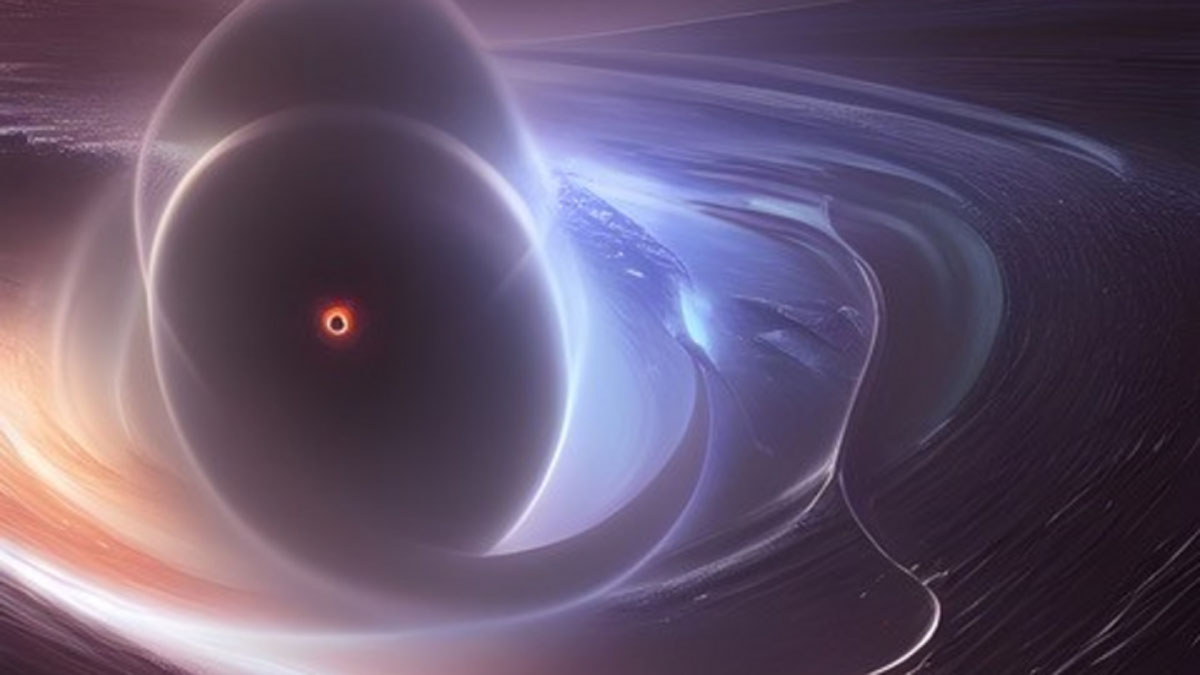
This fall, scientists announced that black holes may possess fuzzy quantum properties that suggest they can essentially be at the same time small and big, heavy and light, or dead and alive, just like the legendary Schrödinger’s cat.
Quantum physics suggest the universe can become a surreal place at its tiniest scales, with objects capable of superposition, the ability to exist in multiple states at once, such as spinning in two opposite directions simultaneously.
Read the full story: Dead and alive at the same time: Black holes have quantum properties
Scientists developed a computer model that placed a simulated quantum particle just outside a giant simulated black hole. The simulation revealed that the black hole showed evidence of superposition, able to massive and not massive at the same time.
“We wanted to see whether [black holes] could have wildly different masses at the same time, and it turns out they do,” study lead author Joshua Foo, a PhD researcher in theoretical physics at the University of Queensland, said in a statement. “Until now, we haven’t deeply investigated whether black holes display some of the weird and wonderful behaviors of quantum physics.”
10. Previous closest black hole doesn’t exist
What once was believed to be the closest black hole to Earth doesn’t actually exist, astronomers revealed in March.
In 2020, astronomers discovered evidence that HR 6819, just 1,000 light-years away from Earth, was a triple system, with one star closely orbiting a black hole and another star in a wide orbit. However, other scientists disputed the findings, and successfully disproved its existence this year.
Read the full story: The closest black hole to Earth doesn’t actually exist
Using ESO’s Very Large Telescope (VLT) and Very Large Telescope Interferometer (VLTI) for their research — two powerful instruments based in Chile that could produce more detailed images of HR 6819 — they found that it possesses only two stars in a tight orbit, without a black hole. One of the stars is stripping away the mass of the other, a phenomenon that’s sometimes referred to as “stellar vampirism.”
11. Giant black hole ate star in 1980s, found by students
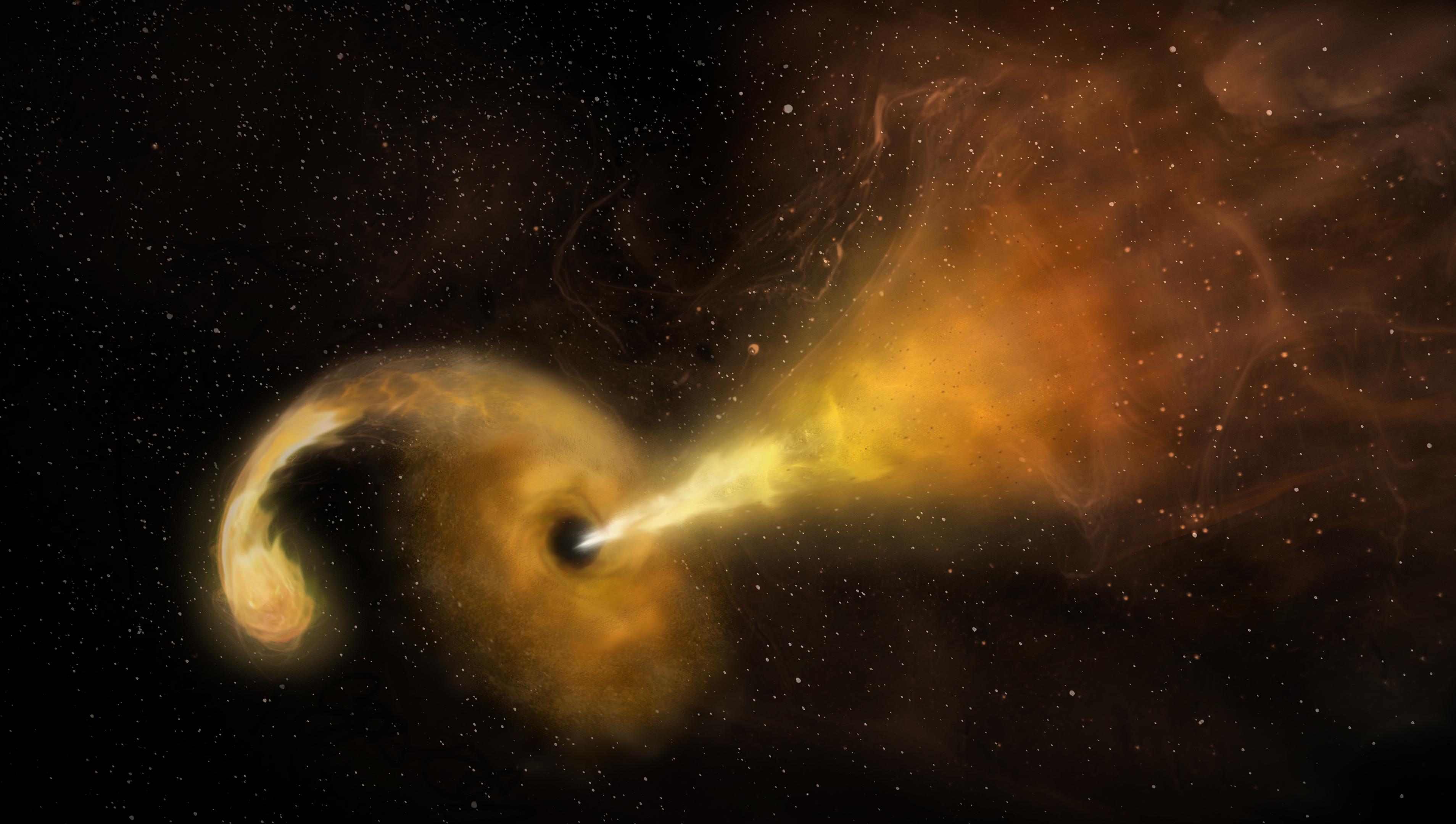
With the help of high school interns, astronomers have discovered evidence that a supermassive black hole devoured a star in the 1980s. Although scientists have detected black holes snacking on nearby stars about 100 times, very few of those sightings rely on radio observations, as the 1980s event does.
Read the full story: Supermassive black hole gobbled up a star in the 1980s, and high schoolers helped discover it
By analyzing archival observations from 1986 and 1987, they found the object, dubbed J1533+2727, is now 500 times dimmer than it was at its brightest. The event was likely caused by a supermassive black hole 500 million light-years away from Earth, which crushed a star—a so-called tidal disruption event (TDE)—and spat out a radio jet.
So far none of the radio-associated TDE seen to date “were found in the type of galaxy most popular for TDEs,” Hannah Dykaar, a PhD student in the department of astronomy and astrophysics at the University of Toronto and a co-author on the new research, said in a statement (opens in new tab). “Finding more of these radio TDEs could help us to illuminate ongoing mysteries about what types of galaxies they occur in and just how many there are in the universe.”
12. ‘Needle in a haystack’ black hole discovered
In July, astronomers confirmed the first known dormant stellar-mass black hole seen outside the Milky Way.
Dormant black holes are difficult to detect because black holes are, as their name suggests, normally completely pitch-black. This makes black holes challenging to see against the dark background of space unless they are actively devouring material that can give off light and reveal a black hole’s location.
Read the full story: ‘Needle in a haystack’ black hole discovered in neighboring galaxy
By scrutinizing six years’ worth of data collected the Very Large Telescope (VLT), which is located in the Atacama Desert region of Northern Chile, astronomers spotted a black hole that contains about nine times the mass of the sun in the Tarantula Nebula, a star-forming region of a galaxy neighboring ours, the Large Magellanic Cloud. The black hole orbits a huge blue star with a mass equivalent to 25 suns; the duo make up a binary system that has been named VFTS 243.
Despite the fact that billions of dormant black holes are expected to exist in almost every galaxy, this is the first unambiguous detection of a dormant stellar-mass black hole outside the Milky Way. “We identified a needle in a haystack,” Tomer Shenar, an astrophysicist at the University of Amsterdam in the Netherlands and lead author on the new research, said in a statement (opens in new tab).
13. 1st black hole photo gets makeover
In August, the first-ever image of a black hole, the giant at the heart of the galaxy Messier 87 (M87), was ‘remastered’ to reveal forces at work around the behemoth.
The image of the black hole, which is located 55 million light-years away from Earth and has a mass equal to around 6.5 billion suns, was taken by the Event Horizon Telescope and released in 2019.
Read the full story: Supermassive black hole’s bright ‘photon ring’ revealed in new image
Although the original picture closely resembled theoretical models of what supermassive black holes and their immediate environment should look like, astronomers did not initially see a predicted artifact of the gravitational influence of the black hole, a thin, bright circlet called a photon ring.
The scientists took this first image and stripped away various elements of the image to reveal photons flung around by the black hole’s powerful gravitational influence.
“We turned off the searchlight to see the fireflies,” Avery Broderick, an astrophysicist at the Perimeter Institute and the University of Waterloo in Canada and lead researcher on the project, said in a statement. “We have been able to do something profound — to resolve a fundamental signature of gravity around a black hole.”
14. Record-breaking black hole eruption
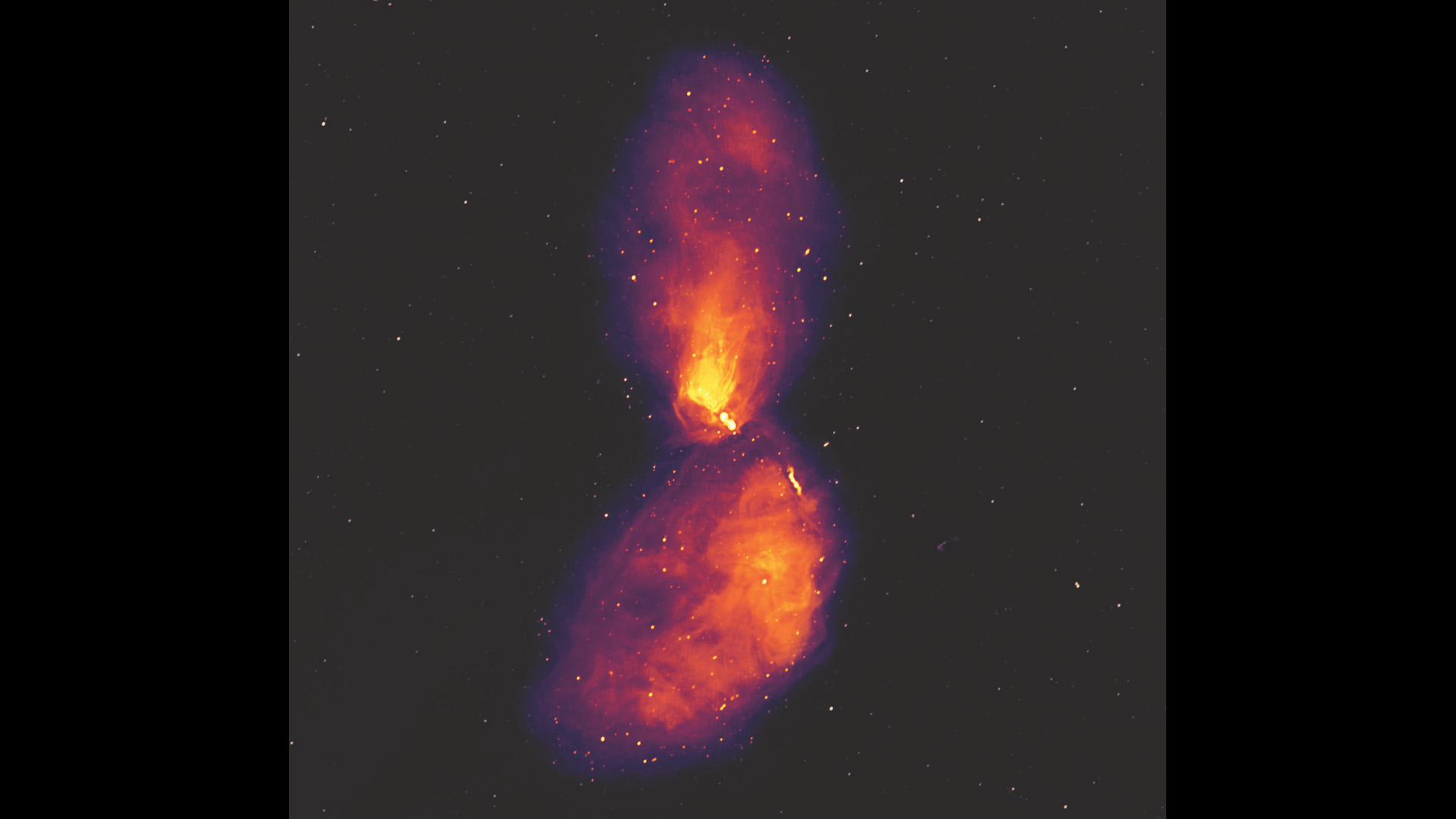
We started the year with a record-breaking picture of a black hole eruption that was the most comprehensive radio image yet of the nearest known actively feeding black hole to Earth.
The image captured radio emissions from material the black hole, a monster with the mass of 55 million suns, spewed out at nearly the speed of light. The result—gigantic lobes of plasma spreading more than a million light-years away from the center of the black hole’s home galaxy, Centaurus A, some 12 million light-years from Earth. This eruption could cover 16 full moons in the sky.
Read the full story: This record-breaking black hole eruption could cover 16 full moons in the sky
“Previous radio observations could not handle the extreme brightness of the jets and details of the larger area surrounding the galaxy were distorted, but our new image overcomes these limitations,” Benjamin McKinley, an astronomer at Curtin University in Australia and lead author of a new study describing the eruption, said in a statement.
15. 40 quintillion black holes in the universe?

There may be 40 quintillion black holes each about the mass of a star that altogether make up 1% of the universe’s normal matter, astronomers announced in January. That’s 40,000,000,000,000,000,000.
Read the full story: 40 quintillion stellar-mass black holes are lurking in the universe, new study finds
By analyzing the evolution of stars in the universe, researchers estimated how often the stars, either on their own or paired into binary systems, would transform into stellar-mass black holes — those with masses 5 to 10 times that of the sun.
“This is one of the first, and one of the most robust, ab initio [ground up] computation[s] of the stellar black hole mass function across cosmic history,” study first author Alex Sicilia, an astrophysicist at the International School of Advanced Studies (SISSA) in Trieste, Italy, said in a statement.
And that’s a wrap at our favorite black hole discoveries. Did you have a favorite? With a new year head, we’re certain to see some amazing new black hole finds in 2023.
Follow us on Twitter @Spacedotcom (opens in new tab) or on Facebook (opens in new tab).

